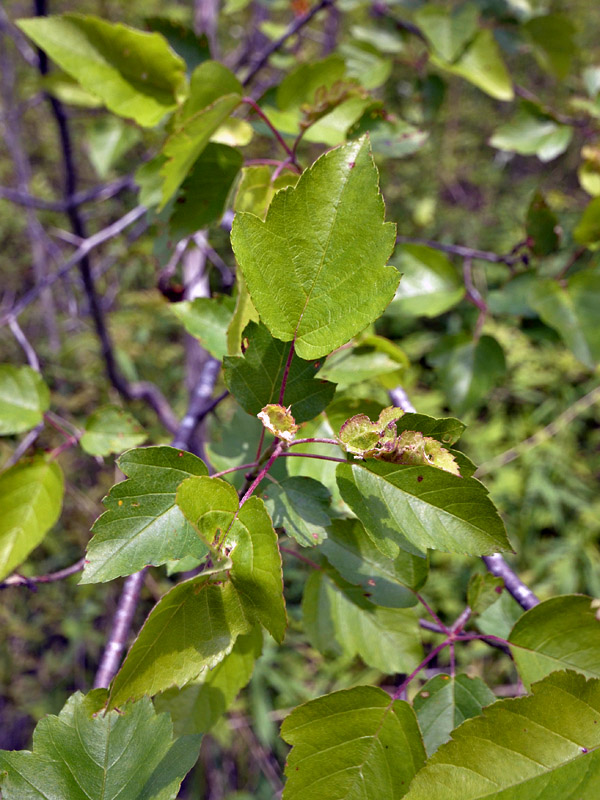
Woody > Malus > Malus coronaria > Malus coronaria
Malus coronaria
Sweet Crabapple or Garland Crab
Origin: Native to Japan, Korea, and northeast China.
Mike's
Opinion


"
The Sweet Crabapple is not only a attractive fruit bearing tree with its soft pink flowers and aromatic scent that attracts bees, butterflies and other wildlife, it is also an elegant landscape specimen.
Michael Pascoe, NDP., ODH., CLT., MSc. (Plant Conservation)
"
| Family |
| Rosaceae |
| Genus |
| Malus |
| Species |
| coronaria |
| Category |
| Woody |
| Type |
| Tree (deciduous) |
| USDA Hardiness Zone |
| 4 - 8 |
| Canadian Hardiness Zone |
| 3 |
| RHS Hardiness Zone |
| H7 |
| Temperature (°C) |
| -10 - (-34) |
| Temperature (°F) |
| 15 - (-30) |
| Height |
| 7 m |
| Spread |
| 7 m |
Photographs
Description and Growing Information
Flowering Period
| Cultivation |
| Malus coronaria requires a moist or at the very least dampened soil and thrives in clay that has good drainage. Soil should be slightly acidic ranging from a pH of 5-6.5. |
| Shape |
| It has a somewhat rounded canopy. |
| Growth |
| Slow |
| Pests |
| It may be prone to aphids, borers, leaf skeletonizers, leaf rollers, scale insects, fruit worms, tent caterpillars, and beetles. Diseases that it may may be prone to apple scab, fireblight, heart rot, root rot, powdery mildew, and cedar apple rust. |
| Bark/Stem Description |
| The bark is a light brown in colour. |
| Flower Description |
| The flower, held in pairs, is pink and then fades to white, has 5 petals and is approximately 1-2 cm in width. |
| Fruit Description |
| The fruit is round and is about 2.5 cm across. |
| Notable Specimens |
| The Royal Botanical Gardens, Burlington, Ontario, Canada. |
| Propagation |
| Stored seed will require stratification for a 3 months at 1°C . Once the seedlings are big enough they should be transplanted into pots to allow room for growth. |
| Ethnobotanical Uses (Disclaimer) |
| The wood from Malus coronaria is used by carvers to make small tool handles. An extract from the bark has been used to treat illnesses such as gallstones, sore mouths and eyes. The fruit is edible and is used in making jams and jellies. |
References
Alison Beck, and Kathy Renwood, Published by Lone Line Publishing (2001). Printed in (2001), China. Tree and Shrub Gardening for Ontario
Diana M. Miller, Published in (2008) by Timber Press, Inc. Printed in (2008), in China. 400 Trees and Shrubs for Small Spaces
